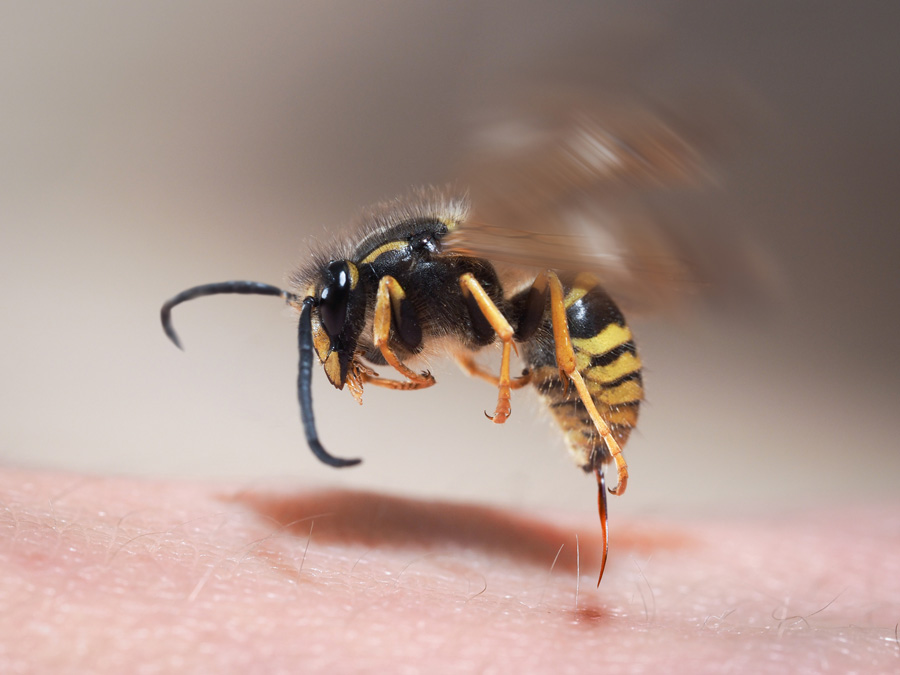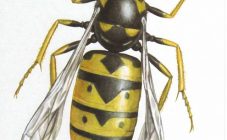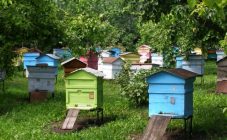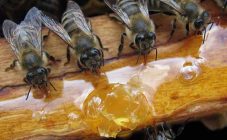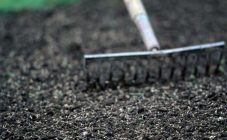Content:
When eating ripe fruit in summer, you should be careful. The sweet taste attracts a variety of insects, including bees and wasps.
Wasp stings are accompanied by pain, redness and swelling, which gives a similarity to the picture after being hit by bees. After receiving several bites, a toxic reaction may develop. The following will describe how many times a bee bites, how many times one wasp can sting, and what can be done as first aid after sting.
Number of bites per wasp
How many times can a wasp bite? Unlike the sting of bees, in wasps it does not have jags, which allows individuals to sting the enemy several times without harming themselves. As predators, wasps have developed jaws capable of biting through the dense layer of chitin in the cover of other insects.
The powerful mouth apparatus allows individuals to bite without resorting to the action of a sting. Such a maneuver will cause inconvenience to a person, comparable to a sting. However, the injection of toxic substances will not occur.
Can a wasp bite multiple times
How many times does a wasp bite? The anatomical features of wasps lie in the mechanism of action of the sting. At rest, it is hidden in the back of the wasp's body under the plates. When excited and in an aggressive state, the plates diverge, and the sting moves out of the body cavity along the guiding muscles. How many times can a wasp sting? When attacking, the wasp can make several movements, each time throwing out a sting to inject poison into the enemy's body.
How dangerous is a wasp sting
With normal functioning of body systems and the absence of an allergic reaction, a wasp sting does not pose a threat to human life. However, developing symptoms of inflammation can be uncomfortable.
The composition of the wasp venom contains the following substances that cause a negative effect on human health:
- phospholipases - enzymes that provoke inflammatory processes in tissues;
- melitin is an inducer of tissue decay;
- acetylcholine - causes impaired coordination, affecting the nervous system;
- histamine - a component responsible for allergic manifestations;
- MCD-peptide - causes the breakdown of tissue cells, increasing the allergic reaction.
Can one wasp sting twice
The characteristic difference between the wasp sting and the bee sting is the absence of chipping. The smooth surface allows unhindered use of the stinging apparatus several times. Immediately after the bite, injecting toxins into the enemy, the wasp hides the sting back. This mechanism makes it possible to use the tip several times. How many times does a wasp sting? On average, 4-5 sting emissions are produced in one attacking act.
What determines the number of bee stings
How many times can one bee bite? Bees differ from wasps in the structure of their stinging apparatus. The sting itself is connected to a bag filled with poisonous substances. The sting, like a harpoon, has barbs that get stuck in the tissues after the bite. In this regard, after being bitten, trying to fly away, the bee loses its sting with a supply of toxins. The resulting wound leads to the death of the individual.It turns out that the answer to the question "how many times does a bee sting?" will be "once in my life."
Symptoms and first aid
The first symptom of a wasp sting is a sharp sharp pain in the affected area. Redness and swelling of tissues develop within a few minutes. Despite the harmless manifestation, first aid measures should be taken immediately to prevent the development of anaphylactic shock.
The first step is to rinse the damaged area of the body, washing away the remnants of dirt and toxic substances. To prevent the spread of the poison, it is necessary to carefully remove the stuck sting with tweezers or a sharp needle. After that, the wound itself must be treated with any available disinfectant (alcohol, iodine solution, brilliant green, hydrogen peroxide, etc.).
Treatment and consequences after a bite
You can speed up getting rid of the consequences of a wasp sting by the following means:
- drinking plenty of hot tea or sweetened water will speed up the elimination of toxins from the tissues;
- parsley leaves pounded into gruel will speed up the process of removing edema;
- to neutralize wasp poison, you can treat the surface of the bite with lemon juice;
- a compress of vinegar or sorrel will help relieve pain;
- in the absence of painkillers on hand, you can use dandelion juice;
- lotions made from aloe, onion or ice cube juice can speed up the relief of irritation and itching;
- swelling well removes a sugar cube;
- infusion of calendula will also relieve redness and discomfort.
The consequences of stinging a wasp disappear on their own within a couple of days. If edema does not decrease, seek medical attention.
Multiple bites can cause subcutaneous hemorrhage, leading to extensive bruising.
The most severe bite is on the tissues of the face. The consequences of a bite on the eyebrow can be severe swelling of the eyelid and swelling of the eye. In the worst case, visual acuity may decrease or vision loss may occur.
If the tongue or nose is damaged, severe swelling develops, which interferes with normal breathing. The consequence of a tongue injury can be a decrease in taste reception.
When the scalp is bitten, it becomes difficult to remove the sting from the tissues. The sting left behind provokes a response from the local immune system, drawing white blood cells to the wound. The inability of cells of the immune system to get rid of a foreign body is expressed in their death and the appearance of suppuration. Such an abscess can break through on its own, accompanying the removal of the sting. The worst case scenario is extensive tissue decay, requiring surgical intervention.
A wasp bite in the urinary tract can cause difficulty urinating. In severe cases, edema can lead to blockage of the urinary tract.
An attack by many individuals can be fatal. The dose of one bite is known to be 0.2 mg of the poison. In a massive attack, a large number of individuals can bite. When 200 mg of toxins enter the human body, the functioning of the nervous, respiratory and cardiovascular systems is disrupted, leading to the death of the victim.
Summing up, we can say that wasp bites are unpleasant phenomena. In the absence of allergic reactions, the duration of negative consequences does not exceed several days. However, in cases of lesions near the respiratory or visual organs, negative consequences can develop in the form of difficulty in respiratory function and loss of vision.
How many times can one wasp sting? Due to its anatomical features, one individual can inflict several blows, unlike bees. In this case, toxins can be injected each time until the reserves are completely depleted. An attack by a swarm of wasps can lead to death, since more than two hundred bites are considered a lethal dose.
The first aid after a wasp attack should be the use of antihistamines. You can alleviate the symptoms of bites by resorting to folk recipes based on medicinal herbs and commonly available medicines. In the absence of positive dynamics, it is necessary to immediately contact a medical institution.
In addition, unlike the peace-loving bees, wasps are considered an aggressive species. Therefore, when you see a wasp, it is better to try to avoid contact with it.
